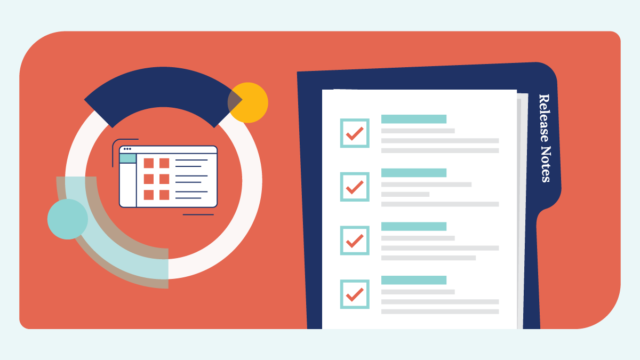Healthcare technology has come a long way. These days, most dental, eye care, and medical practices rely on a mix of practice management systems (PMS or EHR), imaging tools, billing platforms, and patient engagement solutions. That’s a lot of tech working behind the scenes.
The problem? When those systems don’t “talk” to each other, everything slows down. Manual data entry, duplicate records, and communication mix-ups aren’t just annoying — they put patient satisfaction and compliance at risk.
As DrBicuspid put it, “the lack of interoperability … poses a significant barrier to effective workflow adoption” in dental practices. Translation: the future of dentistry depends on systems that connect seamlessly.
But here’s the tricky part: not all integrations are created equal. Some platforms promote “integrations” that are really just quick fixes – fragile connections that break easily, create security risks, and surprise you with hidden costs.
This blog will show you how to spot the difference between “fake” and true interoperability – and why choosing the right partner matters.
What Are the Risks of “Fake” Healthcare Software Integrations?
At first glance, any tool that connects two platforms can look like an integration. But if it’s not built on official APIs, it’s usually just a shortcut – like sharing login credentials or scraping data.
And shortcuts come with real risks, including:
- Disruption risk – Your PMS vendor can pull the plug on access at any time, leaving you without scheduling or communication tools overnight.
- Compliance exposure – Credential sharing and data scraping can violate HIPAA rules. And with fines that can reach $50,000 per violation (up to $1.5 million annually), that’s no small risk.
- Data integrity issues – Workarounds often mean duplicate patient records, sync errors, or lost information.
- Unpredictable costs – Vendors relying on these methods may pass along extra fees when their access changes.
👉 Quick check: if your patient engagement platform isn’t listed as an official partner by your PMS vendor, that’s a big red flag.
What Does True Interoperability Look Like in Modern Healthcare?
True interoperability isn’t about duct-taping systems together – it’s about smooth, secure, and future-proof integration.
For example, a modern API framework allows practices to leverage the latest technology securely and at scale. Whether you’re a dental group, an optometry network, or a medical office, the goal is the same: seamless, compliant connectivity.
Here’s what true interoperability looks like:
Official API partnerships – Recognized and approved by your PMS or EHR vendor.
Real-time sync – Appointments, reminders, and records update automatically, without lag.
Write-back capabilities – Engagement tools don’t just read data — they also update patient records.
Scalability – Built to handle growth, whether you’re adding new locations or new tools.
Compliance and security – HIPAA-compliant, SOC 2-certified frameworks that keep patient data protected.
Why Does the “Ecosystem Advantage” Matter?
No single company can build the “best” version of every tool your practice needs. That’s why forward-thinking healthcare technology providers build open ecosystems — partnering with other best-in-class solutions for voice, communications, imaging, billing, and engagement.
For your practice, this ecosystem approach means:
- Choice – You can pick best-in-class tools that actually fit your workflow.
- Reliability – Official integrations reduce the risk of getting cut off unexpectedly.
- Cost savings – Avoid hidden fees tied to unofficial or backdoor connections.
If you step outside that ecosystem, you risk weaker security, more downtime, and higher costs.
How Does Solutionreach Deliver True Interoperability for Dental, Eye Care, and Medical Practices?
Here’s the good news: Solutionreach has been an official integration partner for nearly a decade with major healthcare technology providers, including Planet DDS. That long-standing partnership means you get all the benefits of true interoperability without the risks of workarounds.
With Solutionreach, you’ll have:
✅ HIPAA-compliant integrations that keep patient data safe – stable, native API connection with no shortcuts.
✅ Richer patient engagement features – Two-way texting, online scheduling, recalls, insurance management, image uploads, review management, NPS, and more.
✅ Dedicated onboarding and world-class support – go live in under a week with hands-on training and support agents answering in under 2 minutes.
✅ No integration fees – ever.
Where others patch things together, Solutionreach delivers peace of mind and proven reliability across all types of healthcare practices.
Key Takeaways: Audit Your Integrations Now
Healthcare technology is evolving fast, and practices that rely on fake integrations will fall behind – or worse, face disruption and compliance headaches.
Here are three questions every practice should ask:
- Is my engagement platform listed as an official partner by my PMS or EHR?
- Can it guarantee HIPAA-compliant, API-driven integration?
- Am I paying extra fees for insecure or unstable access?
If you answered “no” to any of these, it’s time to rethink your setup.
👉 See why Solutionreach is the trusted partner for dental, vision, and medical patient engagement.

💡 Next: Expanding your locations? Discover how top healthcare groups scale smarter.
👉 Read: “Scaling Multi-Location Healthcare Groups: The Role of Integration, Flexibility & Ecosystem Choice.”
I Want to Read the Blog



